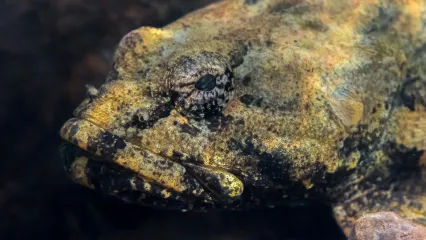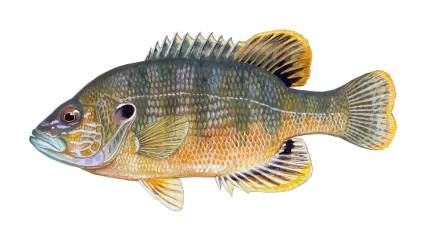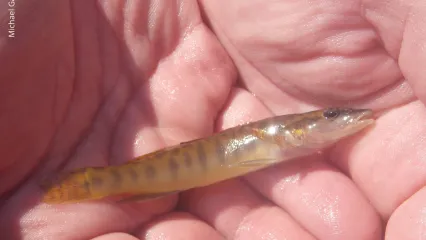
Description
Banded sculpins are short, stout fish with a large head and mouth. The eyes are situated on top of the head and are unique in having an adjustable filter that often gives the eyes a green or yellow appearance. Life colors are reddish brown with four well-defined black bands across the back and sides, though they can quickly change their appearance to match their environment. The sculpin's camouflage is so good that it is nearly indistinguishable from the rocks and gravel in which it hides. Their wedge-shaped bodies are smooth and scaleless.
Banded sculpins are considered indicators of good water quality and are only found in our most pristine streams. Though they appear quite hardy, banded sculpins are actually one of Oklahoma’s most fragile fish and are highly sensitive to siltation, turbidity, pollutants and high water temperatures.
Size
These fish can grow to a length of 7 inches, but in Oklahoma they seldom exceed 5 inches in length.
Habitat
Banded sculpins prefer areas of moving water and are usually found among gravel or cobble in shallow runs or riffles. Like many other sculpins, they lack swim bladders and sink to the streambed. They also have large, winglike pectoral fins that help them hold their place in swift currents. These fish are widely distributed across the southeastern United States. But in Oklahoma, banded sculpin are limited to the cool and clear Ozark streams in the extreme northeastern corner of the state. Oklahoma represents the western extent of the banded sculpin’s range, and this species is the only sculpin species found in our state.
Life Cycle
Spawning typically occurs in February or March. Females lay small clusters of 100 to 300 eggs on the undersides of rocks. The eggs incubate for two to three weeks, and males maintain and guard shallow cavities under the eggs until they hatch. Growth is relatively fast, and most reach around 2 inches their first year. Maturation is reached during their second year. The life span of the banded sculpin is short, with few surviving beyond three years. Feeding occurs primarily at night and includes virtually anything that will fit in their large mouths. They are ambush predators and often consume fish nearly as large as themselves, though the bulk of their diet consist of insects and crayfish.
How To Observe
Despite their small size, their appetite is so strong that they occasionally are caught by anglers fishing on the bottom using worms and other small baits.


